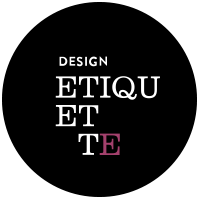You have to learn the rules of the game. And then you have to play better than anyone else.
Albert Einstein
5 Essential Layers Every Brand Needs
— 5 Essential Layers Every Brand Needs — 5 Essential Layers Every Brand Needs
Branding, Business, Strategy
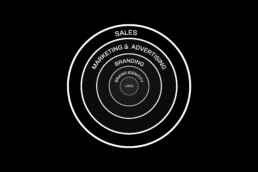
Imagine your brand as an onion, with each layer adding depth and flavor. At its core lies your logotype, its fundamental element. Every layer that surrounds this core will contribute different elements that, if done correctly, will help your brand succeed. Let’s dive into these layers.
1. Logo: The Tip of the Iceberg
Your logo is the visual cornerstone of your brand. It’s the first thing people see and the graphic element they associate with your business. While it’s just the tip of the iceberg, a well-designed logo is fundamental in initiating brand trust.
2. Brand Identity: Colors, Typography, Patterns, and More
Beyond the logo lies the broader spectrum of brand identity. This includes your brand’s colors, typography, patterns, and other visual elements like photography style. These elements work together to create a cohesive and memorable brand image that resonates with your audience.
3. Branding: Shaping Your Brand's Narrative
Branding is the process of crafting your brand’s story and identity. It includes your brand strategy, defining values, voice, personality, target audience, and market positioning. Additionally, branding extends to every touchpoint that shapes the brand experience, from how you communicate with customers to the sensory elements like smell, sight, and touch. Effective branding creates a strong emotional connection with your audience, turning them from customers to fans.
4. Marketing and Advertising: Amplifying Your Brand's Message
Once you’ve established your brand identity and strategy, it’s time to amplify your message through marketing and advertising. This includes strategies like content marketing, social media campaigns, and paid advertising, all aimed at reaching and engaging your target audience.
5. Sales: Converting Leads into Customers
The final layer of the brand-building process is sales. This is where all your branding and marketing efforts culminate in converting leads into customers. If your previous layers are well put together and you have a strong brand, the sales process can become smoother, as customers are already familiar and comfortable with your brand.
To finish this article, I’d like to point out the most crucial element, which I seem to have forgoten to mention: your product or service. While these 5 layers can help you attract more clients and build brand trust, if your offering isn’t top-notch, you might make a sale once, but that’s where it ends.
In conclusion, building a successful brand requires attention to each of these layers. From logo to marketing, to sales, each layer plays a crucial role in shaping your brand’s story and connecting with your audience. The more attention to detail and professionalism applied to each layer, the greater your brand’s chance of success.
What other aspects of brand management are you curious about?
Schedule a free discovery call today, and let’s talk about your business!
You have to learn the rules of the game. And then you have to play better than anyone else.
Albert Einstein
The X-Factor in Branding: Your Brand Strategy
— The X-Factor in Branding: Your Brand Strategy — The X-Factor in Branding: Your Brand Strategy
Branding, Business, Strategy
When designing a brand identity, initiating the process with a brand strategy provides a clear path to develop the brand. It offers insights into color choices, helps determine the best typography to convey the brand’s personality, and guides the development of its copywriting, among other crucial elements. This strategy later serves as a guideline for the business to understand clearly how they could construct their communication, structure their marketing, and manage their brand.
Creating a brand strategy takes time for research and analysis, increasing the cost of a branding project. However, it is a must-have for brands that want to do things right from the start.
So what is a brand strategy?
It is a guideline that defines how your brand will establish its character, connect with its target audience, and differentiate itself in its market. A brand strategy lays the foundation for your brand identity. It includes elements like:
It is a guideline that defines how your brand will establish its character, connect with its target audience, and differentiate itself in its market. A brand strategy lays the foundation for your brand identity. It includes elements like:
Brand Purpose
Why does your brand exist? Brand purpose is the underlying reason for a brand’s existence beyond just making a profit: making a positive impact on society, addressing a higher goal, or contributing to a cause. It focuses on the positive influence your brand will have in the world.
Take for example a brand like Patagonia. Its purpose goes beyond selling outdoor clothing and gear. The company is known for its commitment to sustainability and social responsibility. Patagonia actively works to reduce its environmental impact, promotes fair labor practices, and donates a percentage of its profits to environmental causes. Additionally, they encourage their workers to go outside and enjoy nature, fostering a connection between their employees and the values they uphold.

Brand Voice
The ‘tone & voice’ of a brand refer to the consistent style and manner in which a brand communicates its messages. The tone represents the emotional expression in the brand’s communication: friendly, formal, playful, while the voice is the distinctive way in which a brand speaks: conversational, informative, humorous, or serious.
Think about Nike, and how its brand is characterized by a motivational and empowering tone. The company communicates with a bold and inspirational voice, encouraging individuals to push their limits and strive for greatness. Their communication often features strong, dynamic language that revolves around concepts of sportsmanship, determination, and achievement.

Brand Values
Brand values are the fundamental beliefs and principles that guide a brand’s decisions and interactions. They represent the core ideals and ethical standards that a brand adheres to, shaping its identity and influencing how it engages with its audience and market.
Apple is known for several core values that shape its brand identity. Starting with “Innovation”, Apple strives to create cutting-edge products that set trends in technology. Then we might add “Simplicity” for their user-friendly designs and intuitive interfaces. And include “Design Excellence”, since the brand places a high value on design aesthetics and aims for an incredible visual appeal in their products.

Brand Story
A brand story is a narrative that includes the essence of a brand, its history, values, and purpose, often mixing together elements of the brand’s journey, mission, and unique characteristics to create a memorable and engaging account that will be remembered by your audience.
The Airbnb brand’s story is one of connection and the feeling of being at home. The company started with the idea of creating a network of hosts and travelers who shared a love for travel, by offering a platform for individuals to rent their homes. Airbnb fosters a sense of community and cultural exchange.

When creating a brand identity, initiating the process with a well-defined brand strategy provides a clear roadmap, ensuring your brand’s direction aligns seamlessly with all its elements.
Schedule a free discovery call today, and let’s talk about your business!
You have to learn the rules of the game. And then you have to play better than anyone else.
Albert Einstein
Shades of Success: Color Psychology in Brand Identity
— Shades of Success: Color Psychology in Brand Identity — Shades of Success: Color Psychology in Brand Identity
Branding, Business, Strategy
Exploring The Subconscious Influence of Color in Branding
Color is one of the most important elements in branding. Colors mean different things to different people, playing an important role in shaping every brand’s identity and influencing how your business will be perceived in the future. A deep red, for instance, may not feel as sophisticated as a dark black, and a navy blue will never be as friendly and cheerful as a sunny yellow.
However, it’s crucial to consider the cultural context of your brand when choosing colors. Take red, for example: in Western cultures, it’s often linked to passion, love, and danger, whereas in Chinese culture, it represents good luck, happiness, and prosperity.
Imagine if iconic brands swapped their signature colors – Coca-Cola in green would just feel off, and Apple wouldn’t have the same sleek appeal in neon hues.
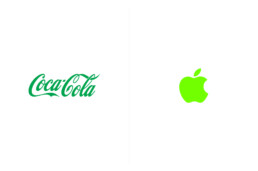
Established brands often lean on color traditions within their industry. Consider McDonald’s with its iconic red and yellow theme, a color combination that’s become synonymous with fast food worldwide. But then there’s Starbucks, boldly breaking the mold with its signature green, a stark contrast to the typical browns and blacks of traditional coffee shops. The choice to blend in or stand out with your color palette isn’t a matter of right or wrong. It’s a strategic decision, a crucial piece of the branding puzzle that needs careful consideration right from the start.

In my opinion, picking the right colors for a brand is super underrated. It’s tough, really tough. Even for pro brand designers, getting those colors just right is a bit of a juggling act. And if you’re new to this? Well, you’re probably going to spill the milk a few times before you get it right. Do designers and brand owners really sweat over this stuff as much as they should? They definitely ought to, because a brand’s color palette can make or break a brand.
Taking some advice from Gary Vaynerchuk’s book ‘Jab, Jab, Jab, Right Hook’, it’s all about giving your audience valuable information. As he says, ‘Give value. Give value. Give value. And then ask for business.’ So, here’s my two cents on how colors work in different industries and their meanings in society’s collective perception. When picking your brand’s colors, choose to go with a color palette that’s similar to other businesses within your niche, or choose a different route altogether, but choose wisely—your colors are a big part of your brand’s story.
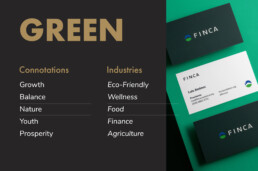
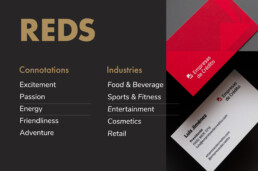
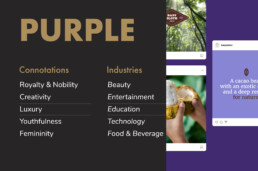
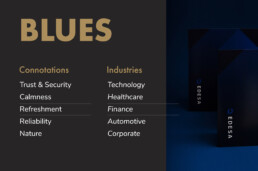
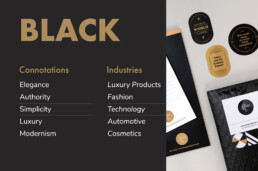
<strong><a href=”https://www.designetiquette.com/book-a-call/”>Schedule a free discovery call today, and let’s talk about your business!</a></strong>
You have to learn the rules of the game. And then you have to play better than anyone else.
Albert Einstein
Our Work Featured in IdN World Magazine
— Our Work Featured in IdN World Magazine — Our Work Featured in IdN World Magazine
Publications
Print is not dead!
We’re thrilled to announce that our work has been showcased in the latest edition of IdN World Magazine (v28n4) all the way from Hong Kong!
This edition focuses on brand identity and business card design, featuring the outstanding work of talented designers and studios, as well as their points of view about business cards and print materials nowadays. We’re truly honored to be featured among them!
“Printed materials are still as important today, if not more so, than they were years ago. Now that everything is digital, there is less competition in printed communication, which creates an opportunity for brands to capture the attention of their customers every time they see their printed materials. A well-designed business card, brochure or flyer can be a reminder of your brand outside of the increasingly competitive digital matrix.“Printed materials are still as important today, if not more so, than they were years ago. Now that everything is digital, there is less competition in printed communication, which creates an opportunity for brands to capture the attention of their customers every time they see their printed materials. A well-designed business card, brochure or flyer can be a reminder of your brand outside of the increasingly competitive digital matrix.” —Mariana Pacheco
You can get a copy of the magazine here. and check out the online article here.



You have to learn the rules of the game. And then you have to play better than anyone else.
Albert Einstein
Your Brand and Social Media
— Your Brand and Social Media — Your Brand and Social Media
Business, Marketing, Branding
The world we live in today is more connected than ever before, and social media (and a freaking pandemic) has played a big role in this.
With that said, having a good social media presence, and improving your digital marketing, can bring many advantages to your business:
Increased brand awareness and recognition:
Social media platforms allow you to reach a large and diverse audience cost-effectively. By consistently posting engaging content and interacting with your followers, you can build a strong online presence that can help attract new customers and retain existing ones.
Lead and sales generation:
With platforms like Instagram, Twitter, and TikTok, you have a direct line of communication with your target audience, making it easy to promote your products or services, as well as generate leads by directing potential customers to landing pages or sign-up forms.
Better customer service and engagement:
They help you provide customer service in a quick, easy, and personal way. It allows you to respond to customer complaints and issues quickly and efficiently, which can help improve customer satisfaction.
Market and customer research:
Improving your digital marketing and social media channels, allow your business to gather valuable data and insights about your users. Most platforms’ analytic tools can track engagement, demographics, and other insights that will help you understand your audience. This data can be used to optimize marketing strategies and improve your brand experience.
Cost-effective advertising:
Social media platforms offer cost-effective advertising options for businesses, allowing you to reach your target audience with precision, by targeting your customer’s demographics and interests.
Create a community:
Building relationships with customers on social media can help increase brand loyalty and customer retention. In today’s highly competitive market, customers are no longer solely motivated by product offerings and pricing. They are looking for deeper connections with brands and a sense of belonging to a like-minded community.
Leadership and customers’ top of mind:
These platforms allow brands to share their stories, expertise, and insights, positioning themselves as thought leaders in their market. Regularly posting valuable content can keep your business on your customers’ top of mind and build brand trust.
“If they haven’t posted in a while, I simply do not contact them”. That’s what one of my friends casually said at a party. I’m ending this article with that insightful quote because it illustrates greatly the way people perceive and interact with brands on social media, and how maintaining a consistent and active presence on these platforms can impact the success of a brand.
We can help your business thrive. Schedule a free discovery call today, and let’s talk!
You have to learn the rules of the game. And then you have to play better than anyone else.
Albert Einstein
Your logo. Your flag.
— Your logo. Your flag. — Your logo. Your flag.
Creativity, Brand Strategy
I can’t remember how often clients have asked us to design a logo representing their brand values, history, niche, customers, believes, and strategy. Wait! What? No.
First, let’s start with the definition and function of a logo: A logo is a graphic element, symbol, or emblem used to identify a company, organization, or brand.
Is it possible to enclose all your brand information in this simple graphic? The answer is no. Instead, I try to explain to our clients that they should think of their logo as a country’s flag. And let me explain this analogy:
Pick a country, any country. Say, Costa Rica. Its flag has a simple blue, white and red stripe combo (similar to Thailand’s, but inverted). If you’ve never seen our flag, you won’t know what you are looking at. But if you have, you probably have an image associated with it: Nature, “Pura Vida”, Coffee, Keylor Navas, Gallo Pinto, Peace. All your associations go hand in hand with your life experiences and personal preferences.
The same thing happens with your logo. When people first see it, they are just going to see graphic elements (whether simple or complex, monochromatic or colorful). As people start interacting with your business, your logo takes on new meanings: great brand, good service, interesting company values, inspiring brand story. Your brand identity and marketing can give your customers an idea of what to expect from your product or service, but your logo alone, which is probably the first thing they interact with, can’t. If your business was a country, your logo is its flag.
Your secretary yelled at your client? Does your latest flavored frappuccino taste like kombucha? Did your flight attendant kick a passenger out of their flight? Many big brands have had a customer experience gone so bad and viral, that they’ve turned their logos into the equivalent of House Bolton’s sigil, making everyone run in the opposite direction when they see it. If you are not on top of your game, your logo could start having negative connotations: lousy customer service, cheap products, and unacceptable business policies. This is why it’s important to craft every aspect of your brand so that, in time, the associations that people have when seeing your logo, are good. Hopefully great.
So start thinking about your logo as your business flag, and start analyzing the associations people have about your brand when they see it. By doing this, you’ll find ways to improve your business and help your customers better. Your brand value, after all, is what they make of it.
You have to learn the rules of the game. And then you have to play better than anyone else.
Albert Einstein
Tips For Updating Your Brand
— Tips For Updating Your Brand — Tips For Updating Your Brand
Creativity, Marketing
Everything is in constant change. Nothing is static. Every minute we make decisions that modify our paths and shape our surroundings.
In every aspect of life you have to be constantly optimizing, changing and evolving. From cutting your hair and buying a new pair of shoes, to breaking bad habits and learning new skills. For a lot of people the meaning of life is to become the best version of ourselves (whatever “best” means to you), and this can only be achieved by improving everyday.
This also applies to your brand and business. From updating your company’s mission, to tweaking your marketing strategy, if you don’t befriend change, your company is going to be left behind, forgotten and, in many cases, broke. The companies that are thriving are the ones that embrace technology, trends and new ways of thinking.
So, how do you keep your business up to date? Here are some tips that can help you improve your brand, your marketing efforts and customer service.
1. EVALUATE YOUR WEBSITE:
In many cases, your website is the first channel of communication between your brand and your customer. Having a good platform and design shows people that you are on top of your game.
My tips to you:
• If your site is not responsive, please do everyone a favor and drop a bomb on it. In a world where approximately 44% of the population has an smart phone or tablet, your site is junk if it is designed for desktop only.
• If your website is more than three or four years old, hire an expert to optimize your design, platform and/or code: Web and design trends change everyday, and a website that looked amazing four years ago, might be slow and look outdated today.
• Make sure your site is user-friendly and glitch-free: Navigating through a site where you don’t know where to click is just sad, and it’s even worse if the site just doesn’t work.
2. REDESIGN OR TWEAK YOUR LOGO:
A logo should be timeless. In fact, I’m against creating logos that favor design trends or weird in-vogue typography. However, once in a while changing some details or redesigning it altogether can keep your brand looking fresh and contemporary.
Rockstar designer, and partner at Pentagram, Paula Scher has said that she has redesigned a lot of well-known logos and the change has been so subtle that people didn’t notice the difference. In fact, most logos go through slight modifications that design muggles don’t easily perceive but that help the brand stay current.
You can see these little changes in the way the Starbucks logo has evolved through time:
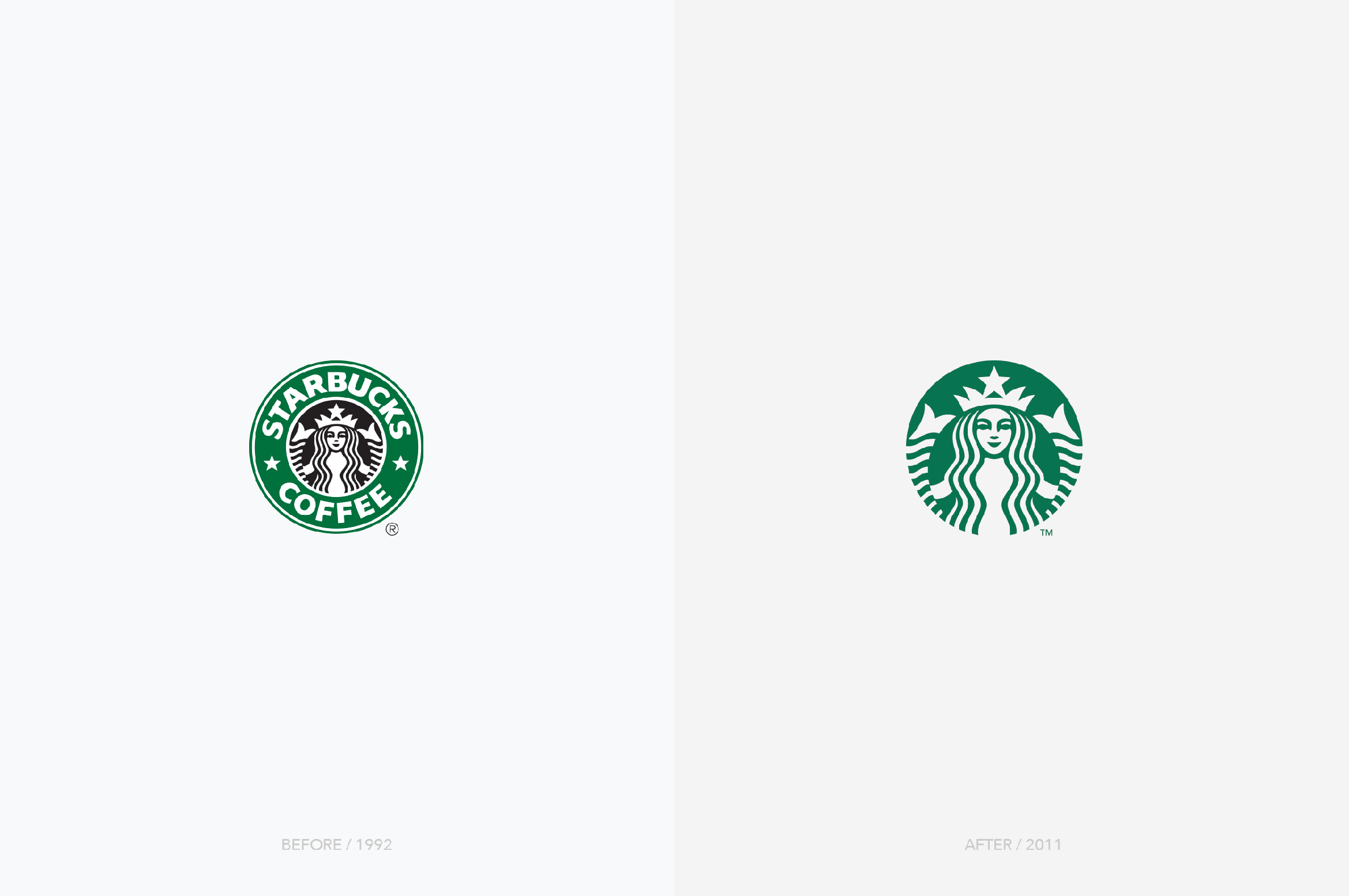
And yes, a logo can also have a major change, like the famous Instagram or Airbnb redesigns:
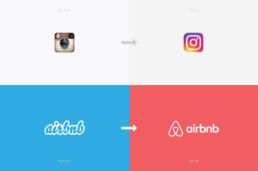
My tips to you:
• Evaluate your logo’s typography: A change in your logo’s typography is subtle and can make a big difference in the way people perceive your brand.
• Analyze your logo and market: Hire a designer to study your current branding and how it holds up against your competition.
3. KEEP AN EYE ON YOUR SOCIAL MEDIA ACCOUNTS:
Social media has changed the marketing and advertising game, it has modified the way we interact with our customers, and it is, not only more efficient than traditional advertisement, but also way cheaper.
My tips to you:
• Feed your feed: A friend of mine once said that she doesn’t hire a service if their Facebook business page doesn’t have recent posts. This was an amazing insight that blew my mind and that sounds right in today’s society. If you abandon your social media feeds, people might see your brand as lazy and careless. And yes, most companies, business owners and entrepreneurs don’t have the budget to hire a Community Manager, or the time and motivation to do it themselves, but at least try posting once or twice a month.
• Choose your Social Media accounts wisely: Your business doesn’t have to be active on every platform. Choose the network that works best for your target audience, and keep in mind that a Facebook user is completely different from an Instagram user.
• Be consistent with your graphics: Communication is a 360 degree experience for your audience, that includes your social media platforms. Make sure you’re using the same fonts, colors, imagery and overall design quality along your accounts and marketing materials.
4. EXAMINE YOUR AUDIENCE:
Knowing your audience is one of the most important aspects of your business. You need to be able to step in their shoes: know who they are, what they like, what keeps them awake at night, their fears and dreams.
• My tips to you:
• Discover who your audience really is: There’s a big difference between our real and ideal customers. Find out who is really promoting and buying your products, and keep in mind that your audience might be different as time goes by.
• Create value: I love Gary Vaynerchuk. He is just a cool dude that gives intelligent advice for free. He believes that brands and individuals need to create value and develop a good communication with their audience. The days of taking are over: show your audience a little appreciation, let them know that you are listening, share your knowledge. Word of mouth, at the end of the day, is still the most powerful form of marketing.
Working on your brand is a never ending process, and we’re here to help! Schedule a free discovery call today, and let’s talk about your business!
